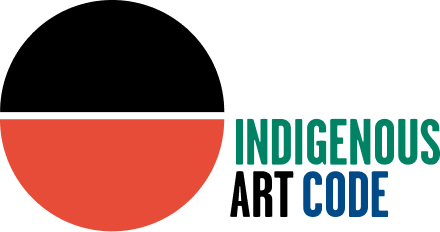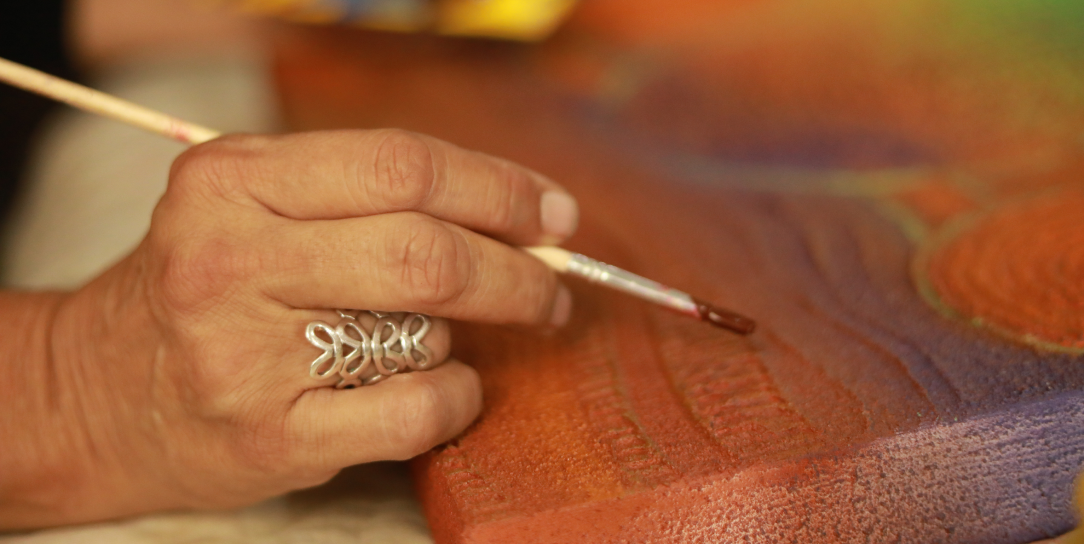The Indigenous Art Code of Conduct (the Code) provides a standard for ethical conduct of dealers of Indigenous visual arts.
A brief history of The Code and IartC

The need for a national Indigenous art code was a recommendation of the 2007 Senate Inquiry into Indigenous Art which investigated, among other things, the unethical trading of Indigenous visual art and craft. The Senate Inquiry Report, entitled Securing the Future, established the foundations of a self-regulation Code for the Indigenous visual arts sector. Almost one-third of the recommendations in the Report refer to the establishment of the Code.
In 2008, in response to these recommendations, the National Association for the Visual Arts (NAVA), in collaboration with the Australia Council for the Arts commenced work on the Code.
An Industry Alliance Group was formed to help design the Code, comprising artists, Indigenous art centres, commercial art galleries, public art galleries, auction houses and visual arts peak bodies, including the Association of Northern, Kimberley and Arnhem Aboriginal Artists (ANKA), Umi Arts, Ananguku Arts and Cultural Aboriginal Corporation (Ku Arts), Desart, Australian Commercial Galleries Association, NAVA and the Australian Indigenous Art Trade Association (now known as the Australian Aboriginal Association of Australia- AAAA).
After a period of public consultation, the Industry Alliance Group endorsed a final Code in August 2009. A public company, Indigenous Art Code Limited (IartC), was established to administer the Code. IartC opened for memberships in July 2010. The Code and the distinctive IartC logo were publicly launched in November 2010.
While the Code had early success and attracted a significant number of Dealer Member signatories, there was industry recognition that not all players in the sector were joining or acting in fair and ethical ways, as foreshadowed in the Securing the Future Report. For example, Recommendation 21 of the report set out “that the industry be given the opportunity to self-regulate. If after two years persistent problems remain, consideration should be given to moving to a prescribed code of conduct under the Trade Practices Act.”
In 2012 and again in 2013, the IartC recommended that Commonwealth Government prescribe an industry code under its Competition and Consumer Act 2010 (CCA).
In 2017, after launching the Fake Art Harms Culture Campaign, the IartC, in partnership with Arts Law and The Copyright Agency, advocated for the Commonwealth to consult Indigenous artists, organisations, and communities as a step towards developing legislation to prohibit the sale of inauthentic Indigenous products sold as souvenirs. The goal was for the Australian government to introduce stand-alone ICIP legislation in line with UNDRIP Article 31.
In 2023, the Labor Government has made a commitment in the National Cultural Policy, Revive, to introduce stand-alone legislation to protect First Nations knowledge and cultural expressions, including to address the harm caused by fake art, merchandise and souvenirs.
Indigenous Art Code Ltd continues to administer the voluntary Code of Conduct (the Code) with a membership of Dealer signatories to the Code, as well as national Artist and Supporter members who add their voices to the call for fair treatment of Aboriginal and Torres Strait Islander artists who choose to pursue commercial opportunities for their art.


